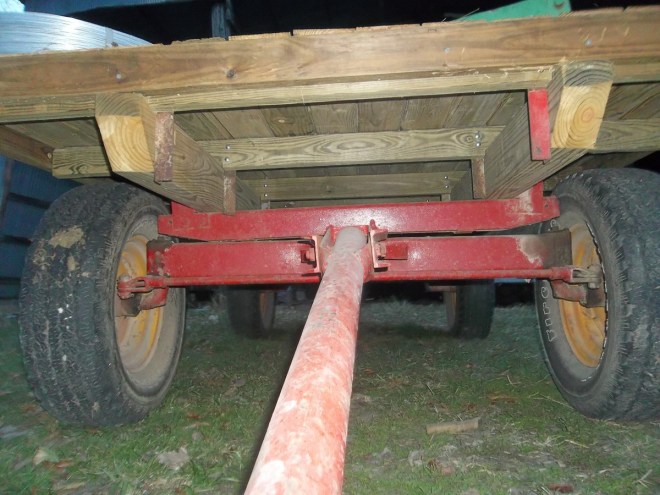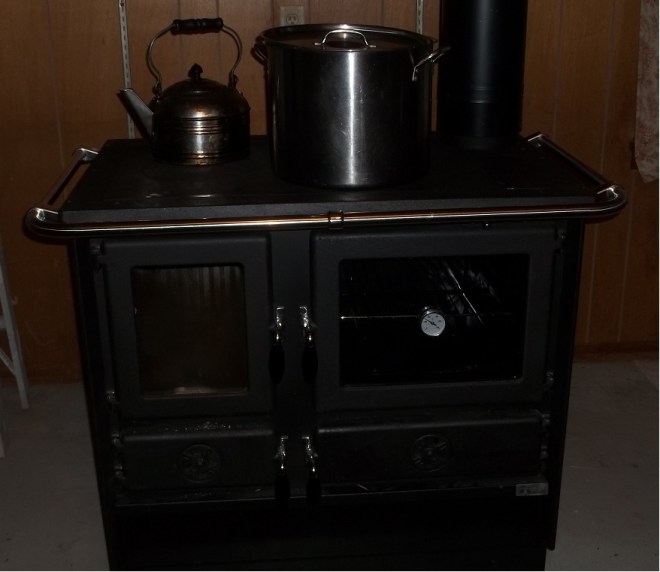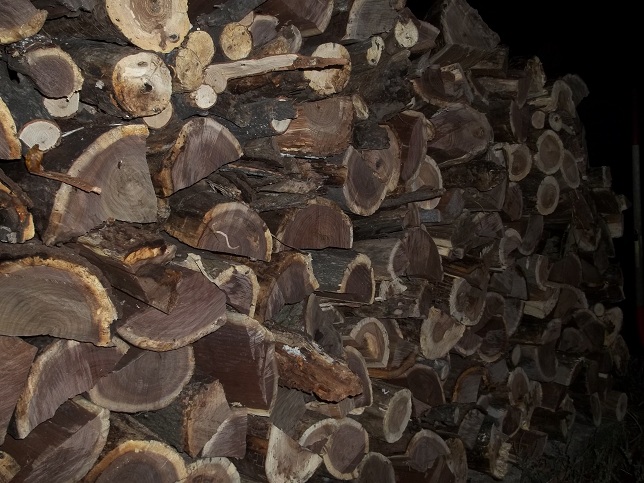Part two of our Hay Wagon series is a guest post from my father. You’ll see comments from “Not Caretaker” from time to time…that’s him. Don’t be fooled by the pictures. This is a great hay wagon and cost about half as much as any of mine and pulls straight. We have put thousands upon thousands of bales on this beauty over the years. Let me step out of the way and had the microphone to dad.
I would describe myself as thrifty. That said I am willing to repurpose rebuild or do without. I bought a wagon running gear from a local fertilizer dealer for $100.00. It had an anhydrous ammonia tank on it at one time. This running gear had one distinction from most other running gears in that the whole front axle turns on a center king pin where the usual farm gear steers like a car, both front wheels turn together with a tie rod. Either running gear will do but the gear like this one will follow whatever is pulling it quite well.
At about this same time I was at a farm auction trying to keep my buyers number in my pocket. The auctioneer came to a pile of used lumber (oak, spruce) of various dimensions and lengths. Some of this was new 16’ lumber that had been use for concrete forms . “What am I offered for this lumber? $25, $25, $20, $20, ok boys someone start off, what’ll you give?” I heard myself say “$10”. The auctioneer said “alright I got $10, give me $15, $15, $14,$11, sold for $10 to number 313”.
Back to how to build $120.00 hay wagon you can see where the money is going. I sistered two of the 2X6X16’s together to make a stringer for the foundation of the wagon bed. Made two of them and fastened them to the wagon gear about forty inches apart. Then I used 8’ oak boards for the deck and nailed them across the stringers placing them about an inch apart basically building a deck like you might have on your house. The spacing of the deck gives the guy riding the wagon a good footing and is not slippery like the solid decked wagon written in the first of this series.
There you have a plan for an economical wagon. You may not be able to buy a used running gear that cheap as iron prices have driven up the price of farm machinery , but there are still bargains out there. Used lumber is still a bargain you just have to find it.
Now I want to mention something about using these wagons. We stack bales right off the wagon (see videos in earlier posts). I had an old neighbor, Tommy M, who helped me bale until he retired. He would run the baler and I would ride the wagon and stack hay. He always told me he knew how fast to drive by looking back at me, if my tongue was hanging out and I was breathing hard he knew he was driving fast enough. How I wish he could still drive the baler.
Now that I drive the baler and Head Farm Steward rides the wagon, I know just how fast to drive.
HFS again. In case you missed it, Part 1 is here.



























